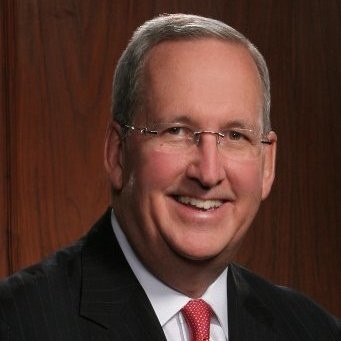A series of ambitious economic reforms aimed at deregulating the country and stimulating foreign investment have moved India firmly into the front ranks of the rapidly growing world economies. Skilled managerial and technical manpower that match the best available in the world and an educated middle class whose size exceeds the population of the USA or the European Union, provide India with a distinct cutting edge in global competition. Today, India is one of the most exciting emerging markets in the world be it aviation, real estate, retail, banking, health care services or hospitality. After a five-year downward spiral starting 1997-98, the hospitality industry in India witnessed a visible revival only by the second half of 2002-03, thanks to strong domestic travel trends and a positive economic and investment environment.
The industry, despite being an important component of the economy, contributed only 2% of the GDP in 2003/04. According to recent estimates of the WTTC Indian tourism demand will grow at 8.8% over the next ten years (from 2005-15), which would place India as the second most rapidly growing tourism market in the world. This is expected to result in a growth of 7.1% in total travel and tourism GDP and an increase of 0.9% in travel and tourism employment. With an estimated 26,000 rooms in the branded hotel segment, the size of the hotel industry continues to represent an abysmal figure for India's size and growth prospects. Based on the forecasted growth in demand we expect that another 100,000 to 125,000 rooms will need to be added, across the country, in the next five to seven years, to be able to meet the increase in demand. Our preliminary research indicates that, at best, there are currently only 45,000-50,000 rooms under different stages of planning and construction that are expected to enter the market in the branded segment in the next five years.
Often we are asked;
Has India reached its peak in terms of hospitality development project potential?
Are most cities in India now in an oversupply situation?
What is a prudent market positioning and entry strategy?
The great Indian Hospitality Boom, is it for real?
This seems to be a million-dollar question... my view on key factors that will drive future demand and on niche markets that offer a unique potential for development.
Weekend Getaways and Integrated Travel Circuits
While there has been much activity in hospitality projects in metro cities, very little has actually been done to tap the potential of domestic tourism, which is currently estimated at 250 million travelers. According to our estimates, there will be sustained demand for weekend travel at major gateway destinations and these markets will grow in the range of 35-40 percent annually in the next three to five years. India's Per capita Income growth will also continue to witness robust growth. Significantly, higher disposable income rather than lower savings has influenced the present-day consumption boom in India. This is good news, as income induced spending is likely to sustain itself for a longer period and higher disposable incomes are also expected to enhance the concept of traveling for leisure thus providing the necessary impetus to destination travel within Integrated Travel Circuits.
Commercial Demand
The Indian economy's performance has been impressive and the macro economic outlook is expected to continue providing momentum for growth. With a targeted 8.0% annual growth in the economy, we expect demand for room nights across key commercial destinations across India to grow annually at an average of 16-20 percent over the next three to five years. There is a hugh demand for prime commercial space in Tier II cities within India. Hotels positioned between budget and mid-market levels and having an international brand affiliation continue to provide the most attractive opportunities, across most secondary markets.
Extended-Stay Products
India has firmly established itself as a world leader in the IT & ITeS and BPO space. The developments and expansions planned within this segment remain encouraging. The entry of new companies, typically, generates significant room night demand during the start-up period, as processes are set up and executives travel for training. Although there are very few branded extended stay products in India, the size of the extended-stay market segment is estimated to be in the range of 11.0% - 13.0%. There is a Hugh demand for accommodation facilities offering extra amenities such as fully equipped kitchen, home-like furnishings and finishes, and an exercise facility. Development of dedicated serviced apartments that make the extended time away from home more comfortable and offers value for money is another segment that offer hugh potential.
Mixed-Use Development Projects
A keen observer of the hotel market would agree that India has been guilty following a herd mentality when it comes to hotel developments. Almost all development strategies are directed towards building a prototype hotel that looks just same as it's 10-year old neighbor hotel! Over the next three to five years, the biggest surge in accommodation demand is expected to come from commercial zones that are being developed in metro suburbs and secondary markets. Mixed-use development projects that include retail and commercial space have also gained momentum in the last 24 months and will continue to be an attractive option for developments in large land parcels. This provides a unique opportunity for hospitality projects. Areas such as Whitefield in Bangalore, Navi Mumbai, Manesar near Gurgaon, the International Airport commercial zone in Hyderabad, Rajarhat and Salt Lake City in Kolkata, Kharadi and Kalyani Nagar in Pune, and the Ahmedabad-Ghandinagar highway will witness large levels of commercial development and are attractive locations for new hotel projects.
MICE
Currently there is an acute demand-supply imbalance scenario due to lack of quality hotels. In most markets, insufficient room availability and high rates create conditions that are not conducive for large international conferences to be held. Logistical bottlenecks and lack of appropriate infrastructure in these markets also pose a problem. Various state governments in India have expressed keen interest in convention centre developments. Existence of a convention centre generally induces substantial room night demand and a strong growth opportunity exists for products that adopt an aggressive marketing strategy for the MICE segment, as within a few years demand from this category is likely to rebound very strongly.
The economy's buoyancy, initiatives to improve infrastructure, the aviation and real estate boom, easing of restrictions on foreign investment and, perhaps, most importantly, efforts to communicate the Brand India message – will continue to fuel demand for hotels across star categories in the majority of markets. India's hotel industry is increasingly being viewed as investment-worthy, both within the country and outside. Niche markets such as culture tourism, the Great Indian Temple circuit, health tourism, adventure tourism etc will grow rapidly.
The journey from India versus China to India and China has just begun for India Inc. The outlook for the hospitality market in India is buoyant and will continue to remain so, in my opinion. Over the next three to five years India is all set to emerge as one of the world's fastest growing tourism markets and will be hard to ignore.
As of now, the great Indian hospitality boom – Is surely for real and here to stay!



